History, levels of analysis, methods
2025-08-26
Department of Psychology
Prelude
National Geographic (2014)
Today’s topics
- Warm up
- History of neuroscience
- Levels of analysis
- Neuroscience methods
Warm-up
Neuroscience is harder than physics because…
- A. The brain has more parts than any other physical entity we know about.
- B. Physicists have largely ignored biology.
- C. Nervous systems are influenced by multiple factors we can’t (yet) measure effectively.
- D. Physics involves lots of math; you can’t study the mind with math.
Neuroscience is harder than physics because…
A. The brain has more parts than any other physical entity we know about.B. Physicists have largely ignored biology.- C. Nervous systems are influenced by multiple factors we can’t (yet) measure effectively.
D. Physics involves lots of math; you can’t study the mind with math.
Systems have all of the following components EXCEPT:
- A. Boundaries
- B. Components
- C. Interactions among components
- D. Inputs and outputs
- E. Readily predictable behavior
Systems have all of the following components EXCEPT:
A. BoundariesB. ComponentsC. Interactions among componentsD. Inputs and outputs- E. Readily predictable behavior
“If understanding everything we need to know about the brain is a mile, how far have we walked?”
“About three inches.”
National Geographic (2014)

History of neuroscience
NeuroBriefs (2011)
Why study history?
- What can observation tell us about brain and behavior?
- Vital role of tools/methods/techniques in discovery
- “If I have seen further, it is by standing on the shoulders of giants.” – Isaac Newton, 1676; (Wikipedia contributors, 2024)
Pre/Early history
Trephining (trepanning)
- Deliberate creation of openings in the skull
- Earliest evidence +7,000 yrs old
- Q: Why did they do this?
- A: Treat head injury, epilepsy, mental disorders, release evil spirits

Egyptians (1,500-3,000 BCE)
- First written (hieroglyphic) record of the term “brain”
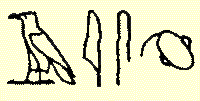
Beer-making (~2-5,000 BCE)
- Speculate: What might beer-making have to do with the neurological bases of human behavior?
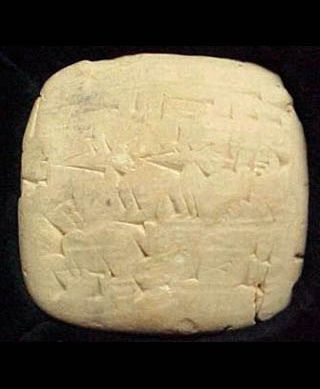
Greek and Roman era
- Hippocrates
- “Father of Medicine”; Hippocratic Oath
- Brain seat of intelligence (Chudler, n.d.-a)
- Epilepsy a disease of the brain (Chudler, n.d.-a)

Aristotle
- Aristotle (~335 BCE)
- mind and body not distinct
- brain “cools” the body, heart is the mental organ
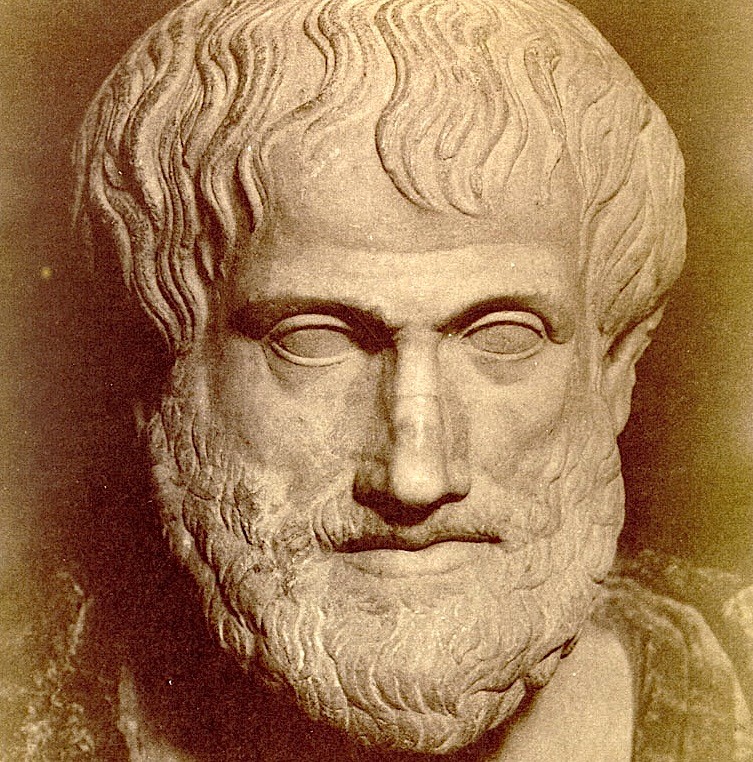
Galen (~177 CE)
- Physician in Roman Empire, of Greek descent
- Anatomical reports based on dissection of monkeys, pigs
- Influenced by Hippocrates’ notion that human temperaments (~personalities) linked to “humors”: blood, black bile, yellow bile, phlegm
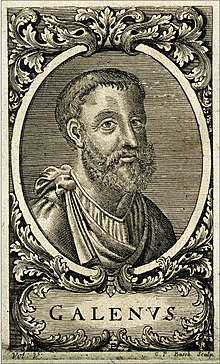
Your turn
Important
Do modern humans think that individual differences in thought, mood, and behavior relate to biological factors?
How so?
So, were Galen’s ideas prescient?
Galen (~177 CE)
- Observed that gladiators’ head injuries impaired thinking, movement
- Speculated that fluid filling the brain cavities called ventricles, circulates through nerves, body
- “Ventricular” theory of nervous system function

Summing up: Early knowledge
- Mental functions controlled by organs in the head, i.e., the brain
- Mental functions can be influenced by substances we consume
- Head injury can impair behavior and thinking
- Something flows from brain to body via nerves
Why didn’t they know more?
- Limited technology (tools & techniques)
- Limited cultural support for systematic observation & description. = SCIENCE
- Lack of ability to use knowledge even if it were acquired
Leonardo da Vinci (~1508)
- Wax casts of ventricles
- Ventricles not spherical!
- Better “measure” \(\rightarrow\) more precise evidence

Andreas Vesalius (1543)
- De Humani Corporis Fabrica Libri Septem (On the fabric of the human body in seven books) (Wikipedia contributors, 2025a)
- 1st detailed drawings of brain and body anatomy

René Descartes – mid 1600’s
- Reflexes “reflect” sensory events in the world
- Reflexes ≠ voluntary functions
- Reflexes and animal “minds” are physical, machine-like
René Descartes – mid 1600’s
- Human mind is not machine-like
- “Dual” influences on behavior
- Physical + spiritual
- Philosophical dualism
René Descartes – mid 1600’s
- Soul controls body via pineal gland
- Fluid from ventricles cause muscles to “inflate”
- One of the earliest “mechanistic” accounts of behavior

Your turn
- Do you agree with Descartes?
- Yes, human minds are fundamentally different from animal minds. The human mind is influenced by both physical and extraphysical processes.
- No, human minds are similar to animal minds. The human mind arises solely from physical processes.
- Why or why not?
- How would you scientifically test Descartes’ idea about the role of the pineal gland?
Other critical milestones
- Invention of light microscope (1609 CE), electron microscope (1926)
- Cell stains – Camillo Golgi, Santiago Ramon y Cajal – late 1800s
- Recording of electrical activity of nerves, Luigi Galvani
Lessons from early history
- Understanding shaped by new methods, tools
- If you can’t see it/measure it, you can’t say much about it
Lessons from early history
- Neuroscience shaped by great debates
- Is the mind == brain?
- Are human minds and animal minds similar or categorically different?
- Are functions local or distributed?
- Do neurons connect like pipes or pass info like relay runners?
- What flows from the head to the body?
SamCookeVEVO (2015)
Levels of analysis
Powers of Ten
Eames Office (2010)
Spatial resolution

Churchland
Spatial and Temporal Resolution

Sejnowski, Churchland, & Movshon (2014)
Your turn
- What’s a micro (spatially small) influence on/aspect of behavior or mental experience?
- What’s a macro (spatially large)…
- What’s a micro (temporally short)…
- What’s a macro (temporally long)…
Why does this matter?
- Different phenomena -> levels of analysis
- Different levels analysis -> different methods
- How does the micro affect macro and vice versa?
- Does the butterfly really cause a hurricane (Wikipedia contributors, 2025c)?
Skill-building
Being able to think about spatial and temporal levels of analysis inside and outside of neuroscience is extremely useful.
Example: How does your personal spending affect the global economy?
Spatial Resolution in Detail
- Within an individual
- molecular
- genetic
- receptor
- chemical
- neurotransmitters & hormones
- cellular
- neuronal firing
- molecular

- Internal to individuals
- network
- lateral inhibition
- area
- Visual cortex (V1) varies by ~2x between people
- region
- Wiring/connectivity differences
- system
- network

- External to individuals
- Social
- Friends, family, teachers, others
- Non-social
- Neighborhood, school, state/region, country
- Physical environment
- Social

Temporal Resolution in Detail
- Within one lifetime
- Microseconds
- detection position from acoustic stimulation
- Milliseconds
- action potential
- Seconds
- changes in EEG power
- short-term memory
- Microseconds

- Within one lifetime
- Minutes
- synaptic plasticity
- Hours
- memory consolidation
- Hormone (melatonin, cortisol) levels
- Days
- Minutes

- Within one lifetime
- Weeks
- Months
- Years
- education & training
- disease processes
- cultural change

- Across lifetimes
- Centuries
- cultural changes
- Millenia
- Natural & sexual selection
- Centuries

Methods
Evaluating methods
- What question does method X answer?
- What are we measuring?
- Structure
- Activity (function?)
Evaluating methods
- Strengths & Weaknesses
- Cost (time/$)
- Invasiveness (surgery vs. no)
- Spatial/temporal resolution
- high/fine (small details, fast events)
- low/poor (big picture, slow events)

Sejnowski et al. (2014)
Types of methods
- Structural
- What are the parts?
- How do they connect?
- Functional (next time)
- What do the parts do?
Structural methods
- Cellular methods
- Golgi, Nissl stains
- Tract-tracing
- Whole brain cellular, e.g. CLARITY
- Whole-brain methods
- Computed Tomography/Computed Axial Tomography
- MRI-related
- Diffusion Tensor Imaging (DTI)
- MR Spectroscopy
- Voxel-based Morphometry (VBM)
Cellular methods
Golgi stain
- Camillo Golgi
- Complete nerve cells, but only 1-5% of total

Do neurons connect like pipes?
Santiago Ramon Y Cajal
- Argued for neuron doctrine: there are gaps between neurons
- Neurons pass info like relay runners
- Shared 1906 Nobel Prize with Golgi

Nissl stain
- Franz Nissl
- Only cell bodies
- Cellular distribution, concentration, microanatomy
- Density of staining ~ cell density/number

Histochemical tracers
- Neuron information flow polarized–flows in one direction
- ≠ electronic wires, but like pipes
- Tracers are substances that flow one direction down the neuron, allow starting/ending points to be traced

Histochemical tracers
- Retrograde (“backward” from axon terminal to cell body)
- Anterograde (“forward” from cell body to axon terminal)

Large-scale cellular techniques
“If understanding everything we need to know about the brain is a mile, how far have we walked?” – J. Lichtman
National Geographic (2014)
You can help map the connectome

Clarity
Video (2013)
Evaluating cellular techniques
- Pros:
- High spatial resolution (resolve small details)
- e.g., what are the parts, where are they located, how do they connect
- Cons:
- Poor temporal resolution
- Invasive
Your turn
- Why aren’t cellular techniques especially useful for studing living humans?
On to whole brain measures
- Larger spatial scale but poorer spatial resolution
Computed axial tomography (CAT)
- Computed tomography CT
- X-ray based

How tomography works


Magnetic Resonance Imaging (MRI)
National Institute on Biomedical Imaging and Bioengineering (n.d.)
MRI
- Some common substances (e.g., H) & complex molecules have magnetic dipole
- Axes align with strong magnetic field

MRI
- When alignment perturbed by radio frequency (RF) pulse, speed of realignment varies by tissue
- Realignment emits RF signals
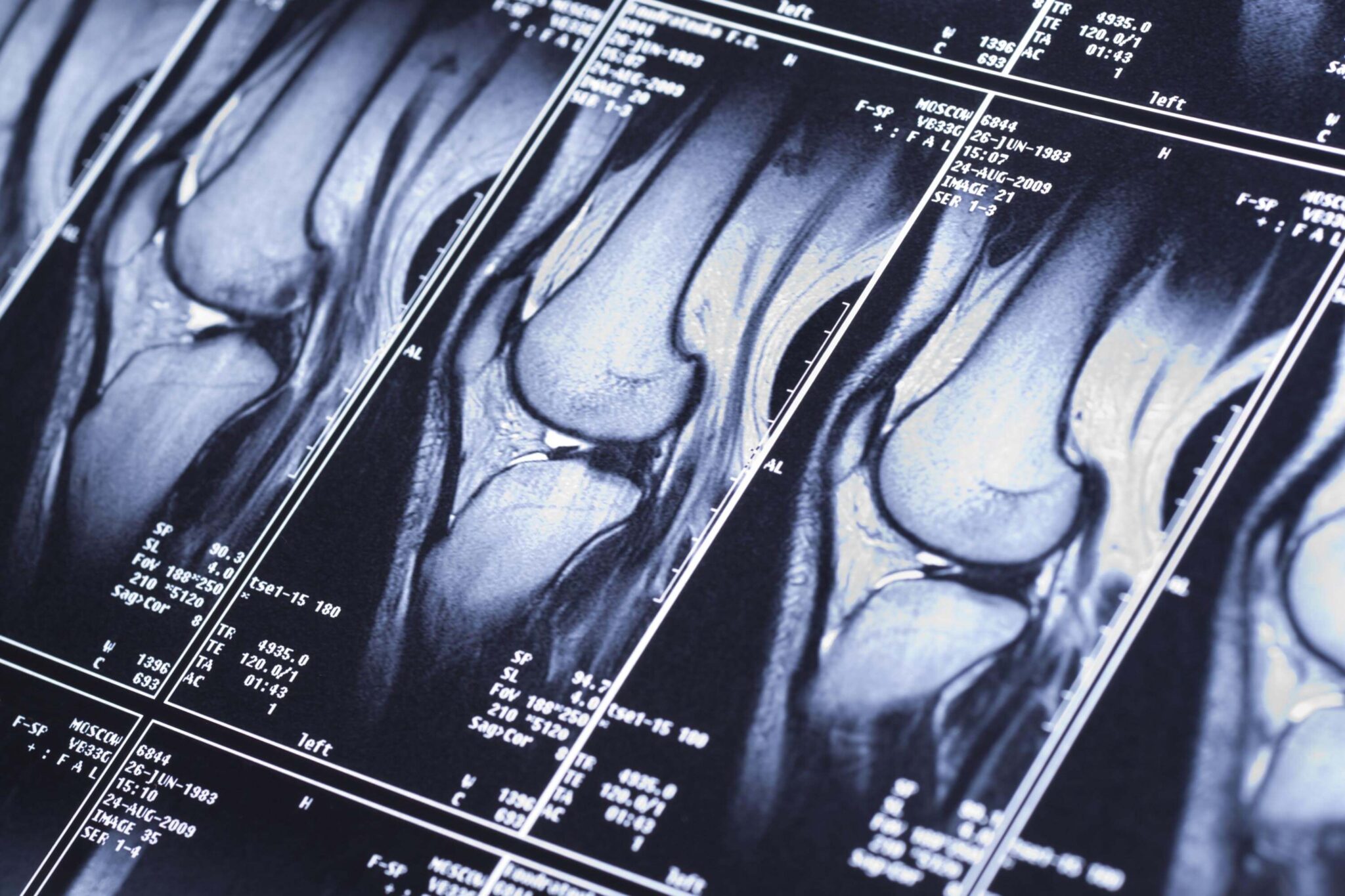
MRI
- Types
- Structural
- Functional (fMRI)
- Reveals tissue density/type differences
- Gray matter (neurons & dendrites & axons & glia) vs. white matter (mostly axons)

Diffusion tensor imaging (DTI)
- Type of structural MRI
- Measures patterns of movement/diffusion of \(H_{2}O\)
- Reveals integrity/density of axon fibers
- Measure of connectivity
- Colors used to visualize orientation of fibers
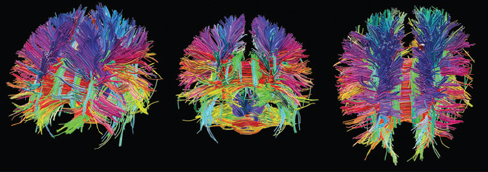
MR Spectroscopy
- Some complex molecules generate distinctive signals that MR detects

Voxel-based morphometry (VBM)
- Voxels (volume-based elements)
- like pixels in an image, but volumes of tissue
- Morphometry: measure (“metry”) form/morphology
- How does brain size or thickness vary by age, disease status, etc.?
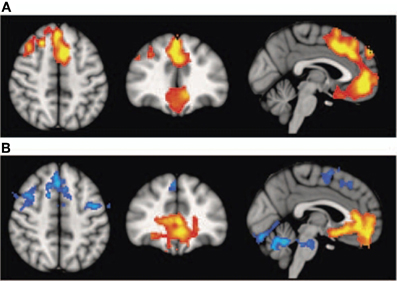
Recap: Structural methods
- Cellular methods
- Golgi, Nissl stains
- Tract-tracing
- Whole brain cellular, e.g. CLARITY
- Whole-brain methods
- Computed Tomography/Computed Axial Tomography
- MRI-related
- Diffusion Tensor Imaging (DTI)
- MR Spectroscopy
- Voxel-based Morphometry (VBM)
Take homes
- History of neuroscience ->
- history of methods for observing & measuring
- history of ideas about what observations mean
- Neurological bases of human behavior involve
- Multiple spatial scales (small to large)
- Multiple temporal scales (small to large)
Resources
About
This talk was produced using Quarto, using the RStudio Integrated Development Environment (IDE), version 2025.5.1.513.
The source files are in R and R Markdown, then rendered to HTML using the revealJS framework. The HTML slides are hosted in a GitHub repo and served by GitHub pages: https://psu-psychology.github.io/psych-260-2025-fall/
References

PSYCH 260.001 | © Rick Gilmore under CC BY 4.0